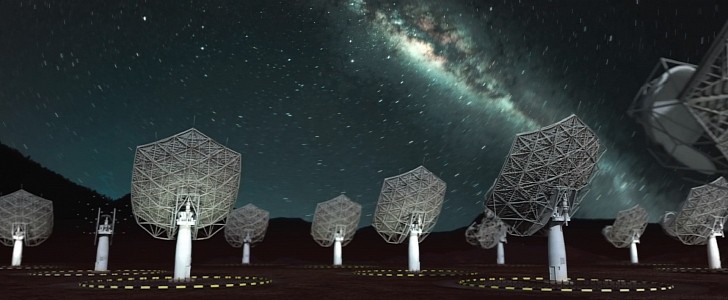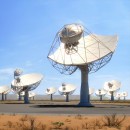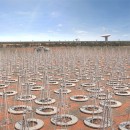30 years. That’s how long it took for the world’s largest radio telescopes to finally be designed and get the green light for construction. The two most complex networks on the planet will be built in Australia and South Africa, as part of a massive project that costs $2.3 billion and is meant to help us unlock the mysteries of our Universe. They are also expected to deliver higher-quality images than the Hubble Space Telescope.
The Square Kilometer Array (SKA) observatory has been 30 years in the making, but it looks like stars have finally aligned and the ambitious science facility will become a reality. SKAO (SKA Organization) Director General Prof. Philip Diamond recently announced the beginning of the construction, starting today (July 1).
The SKA project involves two separate sites, one in South Africa and one in Australia, with each receiving a part of the largest radio telescope network. The SKA-Mid array will be located in the Karoo desert in South Africa and will use 197 dishes, with each measuring 50 feet (15 meters) in diameter.
The SKA-Low Array will be located in Western Australia (north of Perth) and will consist of no less than 131,072 antennas.
The two telescopes are named based on the radio frequency range they’ll cover. They will have a total collecting area of one square kilometer, hence the SKA name.
The SKA project is a massive international effort and it will cost over $2,3 billion (€2 billion). More than 100 organizations from 20 countries worldwide will participate in the development of the SKA, in an unprecedented international effort.
The giant telescopes will be able to look deep into the Universe, detecting objects that are so far away that the radio waves require 13 billion years to reach our planet. According to Philip Diamond, the telescope networks will be able to unlock some of the most fascinating secrets of the Universe.
The computers used for the project will send data at a rate that is 100,000 times faster than the projected global average broadband speed in 2022. The SKA will collect around 13 terabits of data per second. To get a better idea, it’s like you would download 300 HD movies per second.
The end date of the construction is scheduled for July 2029.
The SKA project involves two separate sites, one in South Africa and one in Australia, with each receiving a part of the largest radio telescope network. The SKA-Mid array will be located in the Karoo desert in South Africa and will use 197 dishes, with each measuring 50 feet (15 meters) in diameter.
The SKA-Low Array will be located in Western Australia (north of Perth) and will consist of no less than 131,072 antennas.
The two telescopes are named based on the radio frequency range they’ll cover. They will have a total collecting area of one square kilometer, hence the SKA name.
The SKA project is a massive international effort and it will cost over $2,3 billion (€2 billion). More than 100 organizations from 20 countries worldwide will participate in the development of the SKA, in an unprecedented international effort.
The giant telescopes will be able to look deep into the Universe, detecting objects that are so far away that the radio waves require 13 billion years to reach our planet. According to Philip Diamond, the telescope networks will be able to unlock some of the most fascinating secrets of the Universe.
The computers used for the project will send data at a rate that is 100,000 times faster than the projected global average broadband speed in 2022. The SKA will collect around 13 terabits of data per second. To get a better idea, it’s like you would download 300 HD movies per second.
The end date of the construction is scheduled for July 2029.








